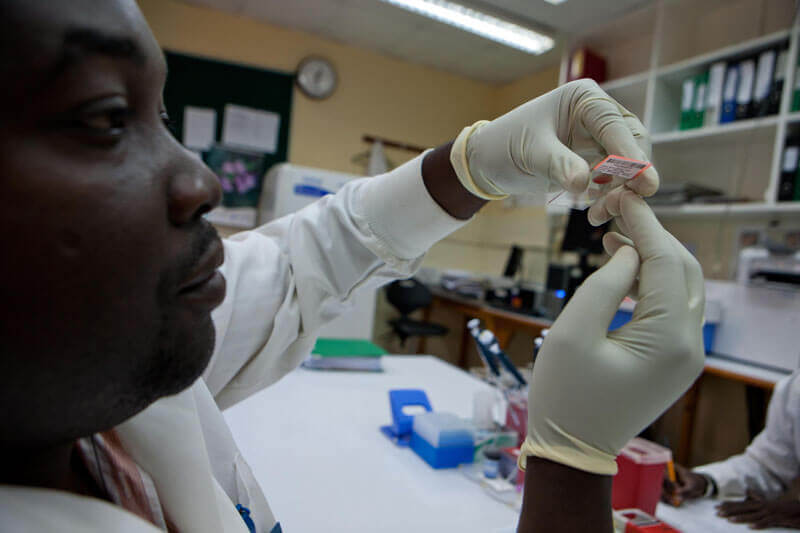John DonnellyGHTC
John Donnelly is a writer working with the GHTC.
John Donnelly is a writer who accompanied the GHTC on its recent trip to Kenya.
One of the most overlooked benefits of US-funded global health research is the training provided to scientists to do the work in their own communities.
During the GHTC’s trip to Kenya last month, this type of capacity building was evident in several stops. One was from conversations with scientific investigators who have been researching the RTS,S malaria vaccine candidate. The first Phase 3 efficacy results of RTS,S—which is a public–private venture between the PATH Malaria Vaccine Initiative (MVI) and the pharmaceutical company GlaxoSmithKline (GSK), supported by funding from the Bill & Melinda Gates Foundation—found that it reduces the risk of clinical and severe malaria by roughly half in African children ages five to 17 months over a 12 month period.
At one of the 11 trial sites, the Kombewa Clinical Trial Centre in western Kenya, the research has helped build a large staff of Kenyan researchers, doctors, nurses, and field workers. The Mal 55 trial, which was the main RTS,S research project at Kombewa, employed 124 Kenyans and just a handful of Americans.
“Americans should know that we are not just giving people fish—we are teaching them how to fish,” said Dr. Louis Macareo of the US Army Medical Research Unit-Kenya and director of the Kombewa trial centre. “The biggest thing we are leaving behind is intellectual capital. They are becoming some of the best researchers in the world, even better than people in our own organization because of the volume of the work in the trials that they are involved in.”
 One of the most overlooked benefits of US-funded global health research is the training provided to scientists to do the work in their own communities.
One of the most overlooked benefits of US-funded global health research is the training provided to scientists to do the work in their own communities.
The research also provided the opportunity for many of the scientists to access education and training. In one case, physician investigator Dr. Lucas Otieno received his master’s degree in public health at the London School of Hygiene and Tropical Medicine partially due to support from the project. In return, Dr. Otieno agreed to stay for several years on the project.
The RTS,S trial was just one example of capacity building. Dr. Pauline Mwinzi, a Kenyan, is the principal research officer at the neglected tropical diseases branch at the KEMRI-CDC office in Kisumu. The Kenya Medical Research Institute (KEMRI) and the US Centers for Disease Control and Prevention (CDC) have been partnering together in Kenya for more than 30 years. She said US training made all the difference for her.
“We have benefitted from US government funding in terms of capacity building,” she said. “I was trained through the CDC. I wouldn’t be here without the CDC training that allows me to design these experiments that we are conducting at the moment and it’s not just me, but my entire department, my colleagues, and the funding that continues to come from the US government through the CDC” and the US Agency for International Development (USAID).
Mwinzi added: “Without the US funding, we wouldn’t have moved much. We wouldn’t be able to move the sophisticated research that we do now.”
Lynn Adrian, USAID’s health team leader in Kenya, told us that the training of Kenyan staff was one of those little-told stories that will have impact for years to come.
“If I look at my own office, to start, in Nairobi, I have 38 staff and just three are Americans. The rest are Kenyans with incredible educational backgrounds and who very, very dedicated, very able to be able to influence policy and oversee programs,” she said. “This is not just true of the people in our office but as I go to the Ministry of Health I am also surrounded by technical experts who deliver leadership in fields like tuberculosis, in fields like malaria, maternal child health.”
Adrian said the results of these trainings are being seen now, but will be even greater in just a few years.
“For me as an American, as a taxpayer, and as a mom, these are the kinds of investments that we want to be making to be able to see out in five years or 10 years and see that the kinds of capacity building means institution strengthening going on all over this country,” she said. “It really will have a long-lasting effect.”